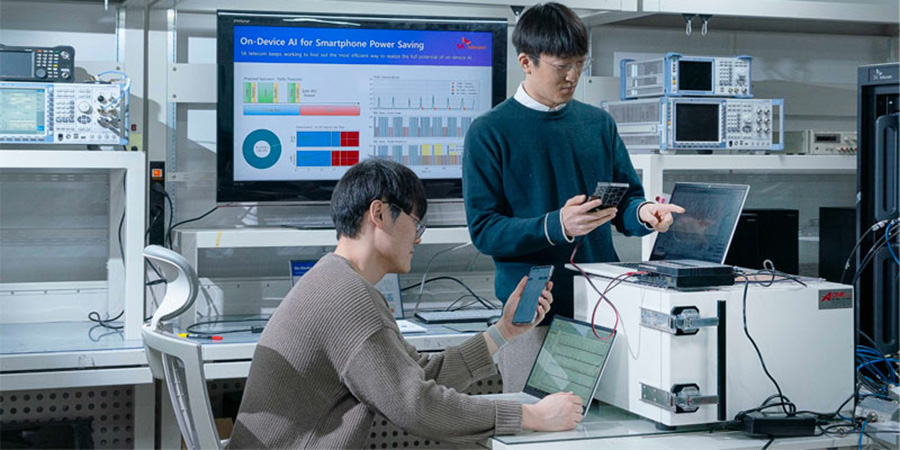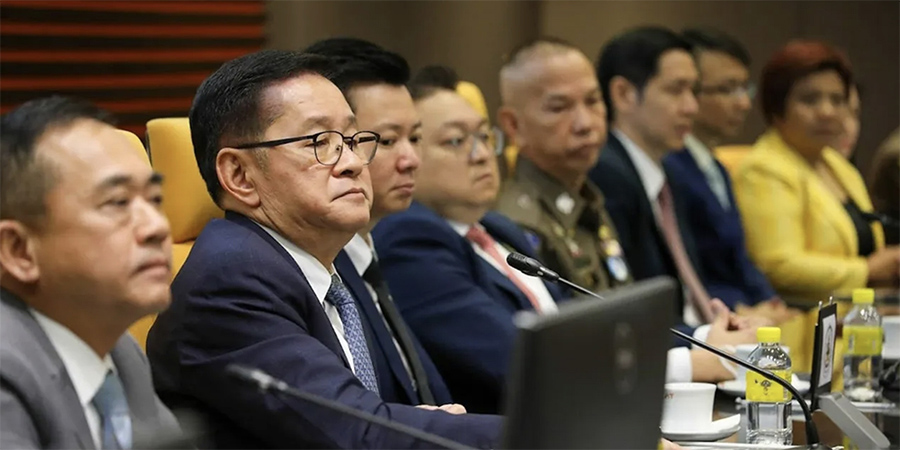SK Telecom has announced that— in collaboration with MediaTek (a global application processor manufacturer) and Nota AI (a startup specializing in AI lightweighting)— it has developed a smartphone power-saving technology that uses on-device AI.
Technology News
SKT Advances 6G Development with Low-Latency Technology
SK Telecom and Intel have successfully developed a technology designed to reduce communication delays, which is vital for the development of 6G core architecture.
Thailand's Ministry of Digital Economy and Society Finalizes Proposal for Cell Broadcast Emergency Warning System
Thailand's Ministry of Digital Economy and Society (DES) is said to have finalized a proposal to deploy a cell broadcast emergency warning system later this year, which will be used during disasters, terrorist attacks, and civil unrest.
According to reports, DES Minister, Prasert Jantararuangthong, announced that the ministry will submit its plan to the cabinet for approval next month. A major concern will be the cost of implementation and who pays for it. Jantararuangthong stated that the DES may require approximately 400 million baht (USD 11 million) to establish a central cell broadcast entity. The DES proposes that the costs will be covered by the National Broadcasting and Telecommunications Commission fund.
Meanwhile, mobile operators, Advanced Info Service (AIS) and True-dtac, may have to spend 300 million baht each to build their own cell broadcast centers for the system, which could take more than six months. This delay is problematic because it prolongs the vulnerability of the population to various emergencies, including natural disasters, terrorist threats, and civil unrest. Without a robust and centralized emergency warning system in place, the effectiveness of crisis communication and response efforts is compromised. Moreover, the need for individual operators to establish their own broadcast centers introduces potential inconsistencies and inefficiencies in the dissemination of emergency alerts, hindering the system's overall effectiveness.
The cabinet would also have to decide whether the agency in charge of actually running the system during emergencies should be the DES or the Interior Ministry's Disaster Mitigation Centre. Selecting the DES could ensure alignment with technological expertise and infrastructure related to telecommunications and information dissemination. On the other hand, entrusting the Disaster Mitigation Centre may prioritize coordination with existing disaster response mechanisms and local authorities. The decision must balance technical proficiency with operational experience, ensuring seamless integration of the warning system into broader emergency management protocols.
Leveraging Cell Broadcast Technology
By leveraging cell broadcast technology, the alerts can reach a wide audience across cellular networks, ensuring timely dissemination of critical information to as many individuals as possible, including those without internet access or smartphones. The targeted messaging feature allows authorities to tailor alerts to specific geographic areas or demographic groups, enhancing the effectiveness of the warnings and reducing unnecessary panic or confusion among the population.
This proactive approach to emergency preparedness not only strengthens Thailand's resilience to disasters but also aligns with international best practices in crisis communication. By adopting a cell broadcast emergency warning system, Thailand aims to improve public safety, minimize casualties, and mitigate the impact of emergencies on communities nationwide.
NTT DOCOMO Develops AI for Brain Health
NTT DOCOMO has unveiled a novel artificial intelligence system with the capacity to predict the physiological changes expected to occur in individuals' brains throughout their lifetimes.
NEC Boosts Supply Chain Security with New Technology
NEC Corporation has developed a technology intended to strengthen the safety of supply chains by identifying vulnerabilities in software through the analysis of binary code from executable files, without the need for source code.
AxEnTec and RedDot Digital Revolutionize the Energy Sector in Bangladesh
Robi's ICT subsidiary, AxEnTec and RedDot Digital, are partnering with the Electricity Generation Company of Bangladesh (EGCB), to implement an AI-based early failure detection system for EGCB's power plants.
ZTE Completes First Live Network Verification of 800G OTN Pluggable Solution
ZTE Corporation and China Telecom, Beijing, have successfully completed the world's first live network verification of the 800G 16QAM pluggable module computing power interconnection solution.
Telcos Partner with Starlink to Launch Direct-to-Cell Satellites
SpaceX has successfully launched a Falcon 9 rocket carrying the first set of Starlink satellites, designed to transmit satellite phone signals directly to smartphones from space with its direct-to-cell capabilities.
Nokia and OPTAGE Trial Symmetrical 25G PON in Japan for the First Time
Nokia has announced that OPTAGE Inc. will conduct Japan's first field trial of a symmetrical 25G Passive Optical Network (PON) service utilizing Nokia's fiber solution.
M1 Selects CSG's Cloud Platform for Telecom Revolution in Singapore
The telecommunications market in Singapore is highly competitive and mature, thanks to the presence of a standalone (SA) 5G network and widespread wireless broadband. To enhance the customer experience and explore new revenue opportunities, M1 Limited (M1), the first digital network operator in Singapore, has chosen CSG's scalable cloud-native platform.
















